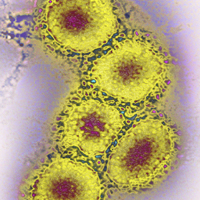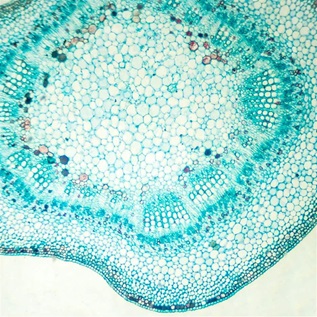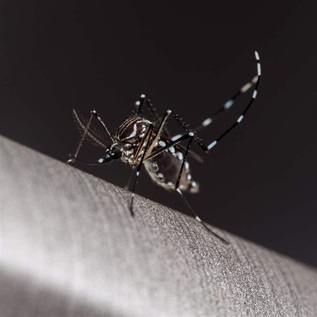The Coronavirus Next Door
|
“The beauty of research is that it teaches us things we never set out to learn.” |
|
|
|
Carolyn Machamer, |
Most forms of coronavirus result in the common cold, but some present a deadly threat. Middle East Respiratory Syndrome, or MERS, has infected nearly 100 people in eight countries, resulting in 47 deaths since 2012. And the 2003 outbreak of Severe Acute Respiratory Syndrome, or SARS, resulted in 8,098 cases and 774 deaths across many countries. These strains of coronavirus induce fever, cough, and shortness of breath, and can lead to fatal pneumonia.
Currently, no vaccines or cures exist for SARS or MERS. But researchers including Carolyn Machamer—a 1990 Pew scholar and professor of cell biology at Johns Hopkins University—are studying how the viruses spread with the goal of eradicating them.
Machamer didn't always aim to work on coronaviruses. After receiving a doctoral degree from Duke University in microbiology and immunology, she began postdoctoral training at the Salk Institute. Her research focused on how proteins fold and move through the cell, until her postdoctoral advisor urged her to check out the work of a neighboring lab.
“It was really serendipity. There was this lab next door,” says Machamer. “There was one student in that lab who was studying a coronavirus. And then we were able to sequence genes from the virus to understand how it was invading the cell.”
She became fascinated with the virus and its mechanisms for infection, marrying her past expertise with a newfound curiosity. She asked herself: How do coronaviruses use cell machinery to infect their hosts?
Named for the crown-like spikes on their surfaces, coronaviruses are enveloped viruses—meaning they bind to membranes of host cells to infect them. To achieve that process, called fusion, a coronavirus uses its surface projections.
Once successfully inside a cell, coronavirus proteins take advantage of an intracellular compartment called the Golgi to assemble into infectious agents for the cell to secrete. The Golgi behaves very much like a company mailroom, receiving proteins and fats, sorting them, and packaging them for delivery elsewhere in the cell. And, as in an overworked mailroom, shipments from the Golgi are often delayed.
“We want to understand why the virus chooses to assemble where it does,” explains Machamer. “And then, because of the difficulty in getting out of the cell, what does it do to enable it to leave a cell effectively? We would like to be able to block that.”
Machamer believes that research into the mechanisms governing how cells and viruses interact is just as valuable as specifically seeking cures for coronaviruses. In fact, her hunch is that gaining a fundamental understanding of viral and cellular biology will lead to vaccines and treatments not only for the MERS and SARS coronaviruses, but for a whole range of viruses that behave similarly.
But Machamer is concerned about budget cuts, as they are taking a significant toll on the scientific enterprise in the United States.
“I think if we eliminate curiosity-driven science, we're going to be really sorry,” she says. “The beauty of research is that it teaches us things we never set out to learn.”
Since 1985, Pew's biomedical programs have been supporting promising beginning researchers in the health sciences—particularly young investigators with innovative approaches and ideas. This article is part of the series,“Biomedical Researcher of the Month,” highlighting Pew's biomedical programs.
Endnotes
1“Middle East Respiratory Syndrome (MERS),” Centers for Disease Control and Prevention, accessed August 16, 2013, http://www.cdc.gov/features/novelcoronavirus/.
2“SARS Basic Fact Sheet,” Centers for Disease Control and Prevention, accessed August 30, 2013, http://www.cdc.gov/sars/about/fs-SARS.html.
3Shibo Jiang, Lu Lu, and Lanying Du, “Development of SARS Vaccines and Therapeutics Is Still Needed,” Future Virology 8 (2013): 1-2, accessed August 16, 2013, http://www.medscape.com/viewarticle/777375.
4“Middle East Respiratory Syndrome (MERS): Frequently Asked Questions and Answers,” Centers for Disease Control and Prevention, accessed August 16, 2013, http://www.cdc.gov/coronavirus/mers/faq.html.













